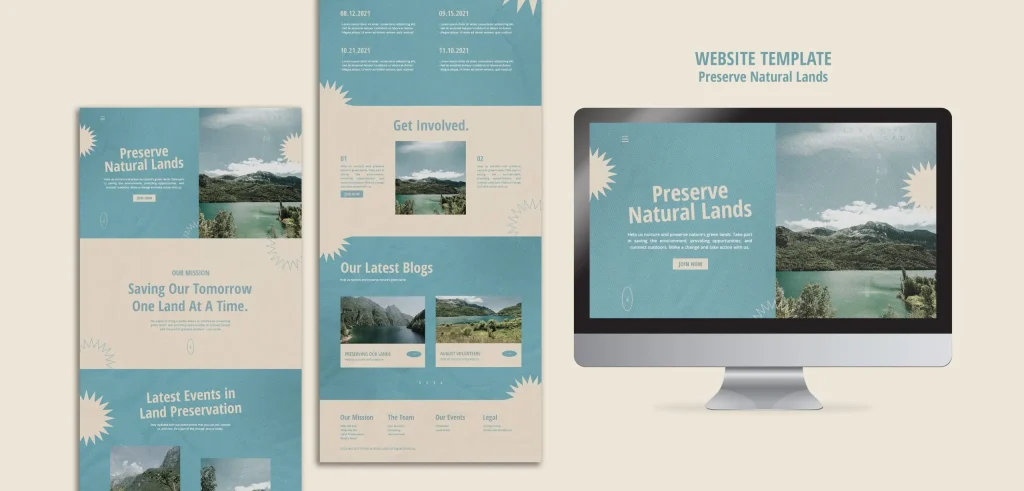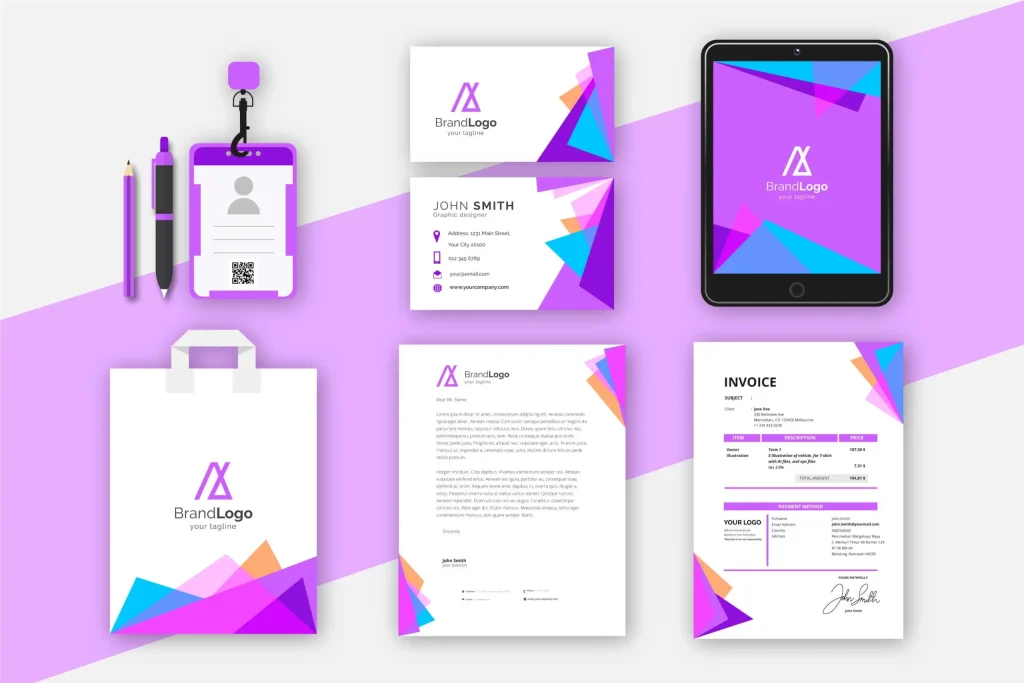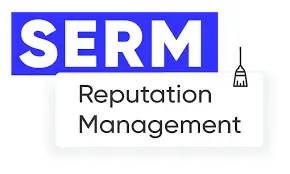Modern companies in Tashkent, regardless of their size, have at least once considered creating or revising a brand book or guidelines to align with global trends and conduct a successful rebranding—that is, changing the company's brand book: from the brand itself and corporate identity to changes to the product itself.
The terms "brand book" and "guideline" are familiar to many, but their meanings can sometimes be confusing. Let's explore each and consider whether creating one yourself is feasible, taking into account the needs of your company in Tashkent.
Brand book or guideline?
A brand book, also known as a "brand book," derives from the English words "brand" and "book." A brand book encompasses everything related to a company, from its origins to its future development plans.
Most often, brand books of large, global companies are quite extensive and contain detailed information. Smaller companies create simple brand books or make do with a description of their corporate style. A brand book can be considered a kind of instruction manual, a company's own reference book.
There are numerous explanations of this term available online. Despite the differences, there are common similarities and features:
- It is obvious that this manual describes in detail the history, mission, values, corporate culture, customer service system of the company, the desire to move forward and develop;
- The corporate identity is carefully described. Not a single detail of the corporate identity, related to colors, logo, or fonts, is missed;
- Creating a well-developed and detailed description allows an organization to stand out from its competitors;
- A well-developed visual corporate style should be associated with the given brand by every person living on the planet;
- An expanded description of the audience, language of communication, in other words, tone of voice, style of writing articles, brandline, and so on.

Everything related to the brand is recorded and used within the company. The information contained in the brand book serves as a set of instructions and notes that the company refers to repeatedly throughout its existence.
Corporate identity or guideline (guidline can literally be translated as “leading/guiding line”) - it’s the same thing.
Indeed, the directions are described and indicated in detail.
While an organization may not disclose its mission, values, development strategy, and other details to potential clients, its corporate identity is undisclosed. Why? Because it sets forth the rules for what and how to do when creating a logo, printed materials, stationery, social media design, and much more. For designers, it's a guiding star, leading them to their vision. Let's take a closer look at what exactly constitutes a guideline.
Mainly described:
- The use and spelling of the company name, including the correct pronunciation. It also specifies whether the letters can be written in lowercase or uppercase, in different font sizes, the font size, the typeface, and whether the name should be written with or without quotation marks. Another important detail: whether the name should be written in Cyrillic or Latin;
- Logo. A logo is an important element of brand recognition. It should be unique, easy to remember, and associated only with a specific company. Careful design leads to great success. Creating a logo is not easy. Development is often expensive and time-consuming, but it is worth it. A corporate identity helps designers work more easily and quickly with the finished digital product and use it in various materials in accordance with specified colors, fonts, sizes, margins, and dimensions. Small brochures or business cards are examples. For each printed document, logo placement requirements are specified. For example, on a brochure, it might be 30 mm in size and positioned in the right corner with 0.5 cm margins on the sides; for business cards, it might be 15 mm, positioned on the left or centered with 35 mm margins on all sides. Dimensions are approximate. It is necessary to specify whether the slogan and logo can be used together, and all possible acceptable and unacceptable sizes, distances, etc. should be specified.
- Fonts or typography. Another important element of a brand book's corporate identity is the font. It should be distinctive, convey individuality, easy to read, and not strain the eyes.
Usage rules for different text versions, including font angles, bolding, italics, underlining, and their differences are specified. A single primary font is required, but several additional fonts may be added. Some companies use a single font, such as Roboto. A description of a second or more fonts would be a good addition, for example, to break up the text font in social media images.
The description should indicate the distances between letters (kerning) and lines (leading) allowed in texts;
- Color palette. Color, like font, is an integral part of a company's style. At the color stage, primary and secondary colors and their combinations are determined. Typically, not just the color name is specified, but also the hex code, Pantone value, CMYK (for printing), RGB, and a description of the shade itself. The same approach is used for secondary colors.
Thus, working with color will reduce the time spent on thinking about choosing a shade, which will significantly speed up the work of designers.;
- Pictures or illustrations. Illustrations aren't always given the most attention. It's worth considering how much of a priority pictures, photographs, art, and illustrations are for your business. Of course, it's best to consider the possibility of creating a consistent style across your artwork. Illustrations in your brand colors maintain a well-thought-out, personal style.
If the company has previously worked with specific illustrators, artists, and other creative professionals whose style is completely in harmony with the company's values, they should be listed.
It would be a good idea to add works by authors listed or who are consistent with the company's visuals for a simplified reference.
- Icons have become an integral part of digital product design, so they need to be carefully defined. A variety of symbols chosen without alignment with the brand book and guidelines can lead to compositional imbalance. This will require reworking the existing work, which requires additional time and money.
- You can also specify the presence of a mood board and mockup. A mood board is a unique designer collage of images and photographs that illustrates the visual style of a product both on mobile devices and in presentations. Such collages are often used to understand the mood and direction of a chosen theme. They are typically used at the initial stage of developing ideas for presentations and similar documents.
A mockup is a full-size version of a design used to demonstrate the final product. It's like a prototype model.
- Branded merch. Merch can range from keychains to clothing (T-shirts, pants) and accessories (gloves, scarves, belts). While there's plenty of room for creativity, the company's style should be distinctive, legible, consistent with the color palette, fonts, and perhaps the chosen material (e.g., eco-friendly materials)..
Developing guidelines significantly simplifies designers' work, saving time explaining color, font, and layout choices. While these restrictions may seem strict, they help maintain a consistent brand identity. This information is typically only available to highly specialized professionals.
What is included in a brand book?

In addition to the corporate style, the brand book describes in detail the following:
- Target audience. Information about the potential target audience should include general information: from age to location, purchasing power, lifestyle, and other necessary information for product development and market launch;
- Communication. The concept of "tone of voice" is quite common today. It characterizes direct communication with clients and partners, as well as on social media—communication. This means interaction via text or speech. Tone of voice affects the company's mood and reflects its attitude toward those with whom it collaborates. For example, on social media, clients may be addressed informally (in a friendly manner) or formally (respectfully, formally). Knowing and understanding your audience is also crucial for tone of voice, as different age groups require different communication methods, jokes, handling objections, and written responses.
- Souvenir products. Souvenirs are most often developed for partners. The list includes: mugs, pens, notepads, gift bags, stickers;
- I'd like to highlight the design of business cards, internal documents, external documents, letters, and invitations separately. They are also designed in corporate colors, use specific fonts, and arrange text according to a specific pattern—everything that is prescribed in the corporate style;
- Exterior design. This includes outdoor advertising, office interiors, building exteriors, signage, and even fabric textures. Ideally, include samples of fabric, leather, and paper.
Peculiarities of brand book and corporate identity development in Tashkent
Developing a brand book and corporate identity in Tashkent has its own unique challenges, driven by regional cultural, linguistic, and market specificities. Creating a successful brand in Tashkent requires understanding these aspects and taking them into account when developing the brand book. Here are some of them:
Cultural diversityTashkent is a multinational and culturally diverse city. When developing a brand, it's important to consider this multicultural environment and create a brand that is inclusive and recognizable to all local communities.
ExampleA restaurant specializing in Uzbek and Kazakh cuisine could use a brand book with elements reflecting traditional Uzbek and Kazakh patterns to attract local customers.
Language adaptationUzbek and Russian are the official languages in Tashkent, and they play an important role in customer communication. The brand book should be adapted to these languages and also take into account the specifics of the Cyrillic and Latin alphabets.
ExampleA retail store can include bilingual lettering and logos in its brand book to make information easy to read and understand in both languages.
Historical and cultural symbolsTashkent has a rich history and cultural heritage. Incorporating local historical symbols and elements into the brand book can strengthen the connection with local customers.
ExampleA travel company could use images of Tashkent's historical monuments in its brand book to highlight its connection to the region's cultural riches.
Color paletteChoosing a color palette is important in brand development. Considering local preferences and color associations can help a brand better engage with its audience.
ExampleA store specializing in national clothing might use traditional Uzbek colors such as blue and green to attract customers who value national traditions.
It's important to remember that developing a brand book and corporate identity should be aligned with the company's business strategy and goals, but taking regional specifics into account can make the brand more attractive and recognizable in Tashkent.
How is a brand book created?
A high-quality brand book requires considerable time. Every detail must be described and meticulously crafted. Creating a brand book is a team effort involving specialists such as marketers, salespeople, designers, and brand managers. Senior management is sometimes involved. Development occurs in several stages. At each stage, sections are discussed step-by-step, including the company's requirements, its goals, customer issues or problems addressed, and the desired end result.
Once the final approval stage is completed, implementation, presentation, and description of the brand book's value begin. Following the final presentation, the brand book can be presented in print or digital format (both are acceptable). The printed version looks like a book, sometimes with a simple design reminiscent of an A4 ring binder.
Of course, a brand book is forever. The tremendous work done will continue to be useful for years to come, even if a rebranding occurs in a few years.
Conclusion
A brand book, as a set of rules, allows a company to comprehensively consider its corporate identity, describe its audience, the communications for each stage, the style of promotional products, and layouts. It's important to understand that there's no single, correct way to create a brand book. As they say, each approach is individual, depending on the company's imagination, its requirements, and its positioning in the world, country, and city.
It's best to engage professionals for development, providing the necessary information and requirements. Creating a brand book should be approached with great care, as such instructions will serve not only one employee but also contractors for a long time.







